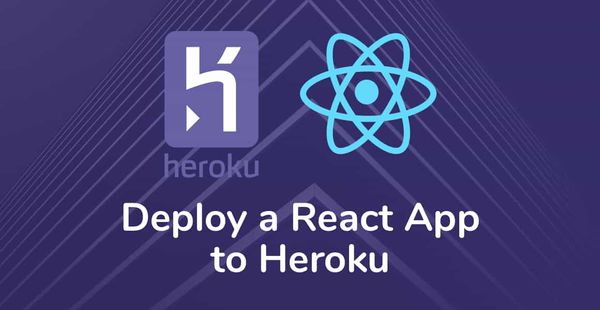How Much Does It Cost to Build an MVP?
Starting a business is a thrilling journey filled with lots of opportunities, challenges, and of course some risks. The road to creating a successful product can be a long and winding one. One approach that startups and entrepreneurs often take is to build a Minimum Viable Product (MVP) to test their ideas and see if they have a viable product-market fit.
However, while the idea of an MVP may sound exciting, many entrepreneurs face challenges in determining the costs involved in building one. In this blog post, we will explore the essential factors that determine MVP development costs and their impact on the success of a startup.
What is a Minimum Viable Product (MVP)?
An MVP or Minimum Viable Product is a stripped-down version of a product that focuses solely on the essential features required to tackle a particular problem for a specific user group. The beauty of an MVP lies in its ability to let you put the most critical features of your product to the test, receive valuable feedback from users, and make informed decisions on how to enhance your product.
MVP development is a popular method for startups and business owners as it enables them to validate their hypotheses, gauge market viability, and avoid investing significant time and resources in a complete product up front.
Unlock the potential of your business idea with an MVP
Challenge assumptions: Don't just assume your product will succeed - an MVP allows you to test your ideas in the real world. Use user feedback to validate your assumptions and make data-driven decisions to improve your product.
Listen to your audience
MVP development provides a unique opportunity to listen to your audience and gather feedback early on. Use this feedback to identify pain points and areas for improvement and make changes to your product before investing more time and resources.
Efficient use of resources
MVP development is a smart and cost-effective way to test your business idea without breaking the bank. By focusing on the essential features of your product, you can optimize the usage of resources and reduce the risk of failure.
Get ahead of the competition
Launching an MVP early can give you a crucial edge in the market. Attract early adopters and establish your brand presence before your competitors even get started.
Impress investors
Investors want to see a product that has already been validated by the market. An MVP can help you demonstrate the potential of your business idea and make a strong case for funding.
What does the MVP cost depend on?
Feature prioritization
Building a feature-packed MVP can be tempting, but prioritizing essential features can save you both time and money. Deciding which features and functionalities to include for your MVP is crucial. The more you add, the more expensive it becomes. By prioritizing what's necessary, you can keep costs down and ensure a laser focus on what matters.
Development partner
Choosing the right development partner can make a world of difference. Freelancers and specialized development companies can offer cost-effective solutions, but communication and quality control can be challenging. In-house teams offer more control but are more expensive. Strike a balance between affordability, expertise, and quality.
Technology stack
The programming languages, frameworks, and tools used to build your MVP affect functionality, scalability, and quality. More advanced technologies may be more expensive, but they may also offer greater functionality and scalability in the long run.
Contract type
The type of contract used to compensate the development team is also critical. Fixed-price contracts offer a set price for MVP development, while time and material contracts offer more flexibility and pay for results. Fixed-price contracts can be beneficial for budget planning, while time and material contracts can be more cost-effective for more complex projects.
Location
Hourly rates of development partners can vary based on location, specialization, and expertise. Developers in India and Ukraine, for example, typically have lower hourly rates than those in the US and Europe. Consider your budget and priorities when choosing a partner.
MVP post-launch costs
After successfully launching your Minimum Viable Product (MVP), there are several costs that need to be considered. These costs are essential to keep your MVP running smoothly and ensure its continued success.
Maintenance and support
One of the primary costs to consider is maintenance and support. As your MVP gains traction, it's critical to ensure it stays up-to-date with the latest technologies and trends. This means monitoring its performance and addressing any issues that arise promptly. Maintenance and support costs can vary depending on the complexity of your product and the frequency of updates.
Scaling
As your user base grows, the demand for your MVP's resources and infrastructure will also increase. This may require you to invest in additional servers, bandwidth, and other resources to handle the growing traffic and users. Scaling costs can quickly add up, so it's essential to plan and budget for this expense.
Marketing and advertising
Marketing and advertising are also essential costs to consider. After all, what good is an MVP if no one knows about it? To attract new users and increase brand awareness, you need to invest in marketing and advertising activities. These can include social media marketing, search engine optimization (SEO), and paid advertising. The goal is to reach your target audience and persuade them to try your MVP, ultimately converting them into loyal customers.
Wrapping up
Cutting corners on quality or failing to address market fit can lead to a failed product, resulting in a waste of time and resources. It's essential to invest in building a high-quality MVP that adequately addresses market needs, even if it means higher upfront costs. Balancing cost considerations with product quality and market fit requires careful planning, communication, and collaboration between the startup, the development team, and other stakeholders.
By understanding these factors and taking them into account when planning your MVP development, you can make informed decisions that align with your budget and goals. Whether you're building a simple prototype or a more complex product, investing in your MVP can be a worthwhile endeavour that can pay off in the long run.
FAQs
Q: How much does MVP app development cost?
A: When it comes to developing an MVP app, the cost can be a significant concern. Depending on several factors like app complexity, features, platform, and the experience of the development team, the cost can range from a few thousand dollars to tens of thousands of dollars.
Q: How long does it take to build an MVP?
A: Some MVP projects can be completed in a matter of weeks, while others may take several months or even a year to complete. It's important to note that the timeline for MVP development can also be impacted by external factors such as changes in the project scope, delays in funding or resource availability, and unexpected technical challenges that may arise.
Q: In which stage of development is an MVP created?
A: An MVP is typically created in the early stages of product development after the initial idea and market research have been completed. It is a basic version of the product that includes only the essential features and functionality required to test the product's viability and gather user feedback.




